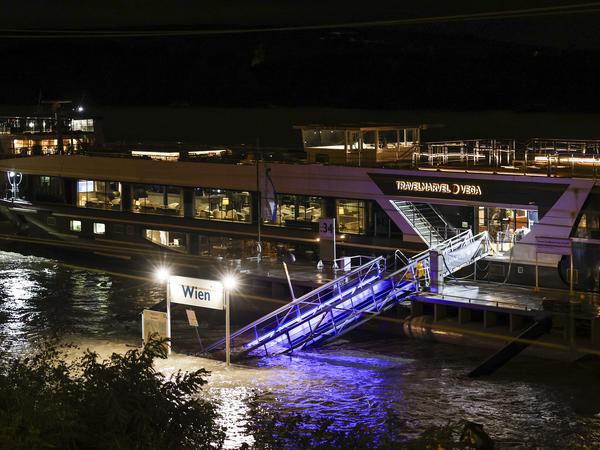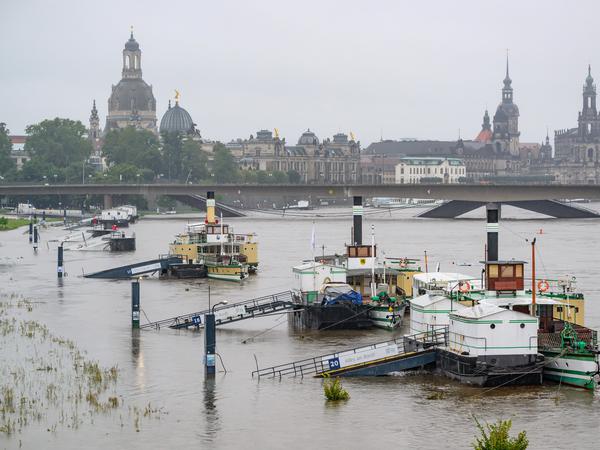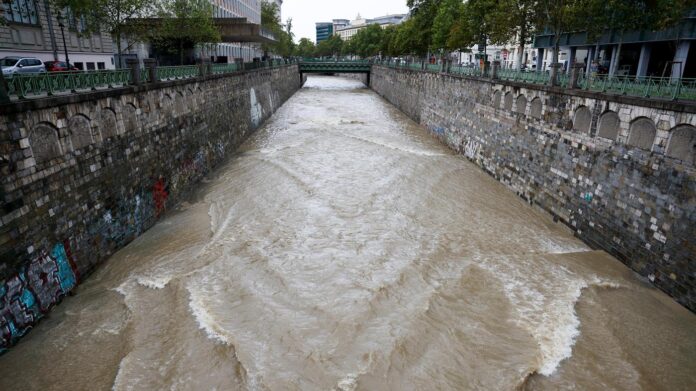Eleven deaths confirmed by the authorities in four countries, missing people, bursting or overflowing dams: three men died in Austria, one man in Poland and one in the Czech Republic, six people have died so far in Romania. People are fighting especially in Poland and the Czech Republic against the flood, In Dresden, however, the experts are comparatively relieved.
The Elbe is carrying more and more water, but according to hydrologists, the highest alarm level 4 will not be reached at the Dresden gauge. They assume that the Elbe will swell to more than six meters there. On Monday morning, 5.62 meters were measured. The normal level here is 1.42 meters, but during the flood of the century in 2002, it was 9.40 meters.
In Vienna it is similaralthough the pictures from here look very dramatic. The cityscape is dominated by rivers, the Danube Island and the Danube Canal. The entire area was under water on Sunday. As the water level drops, the extent of the damage becomes visible: beach bars have been washed away, the walkways along the canal are full of washed-up branches and trees. On Monday, the street cleaners began the clean-up work.
On Sunday, there were evacuations in the west of the city using rubber dinghies; in some places there was no electricity or heat supply. Around 100 people were affected. The people of Vienna are still curious, and the great flood spectacle quickly became an attraction.
The Viennese rivers had developed into raging waters: The Vienna River in the west of the city is normally a stream with a walking path, but on Sunday it became a wild river that overflowed into the subway tunnels. As of Monday afternoon, parts of the subway network are still closed, and on Sunday water entered.
It is also not possible to get to Vienna by train from western Austria due to the damage, and the main motorway to the south, the A2, was partially completely flooded.

© dpa/Christoph Reichwein
Unlike the surrounding state of Lower Austria, Vienna has so far been spared from the major catastrophe. With the construction of the Danube Island and the expansion of the Vienna River, precautions were taken 40 years ago, and the flood protection systems in the west of Vienna were expanded in 1900.
The extreme weather situation is not over yet: Meteorologists warned of further rainfall during the course of Monday. The capacity of the flood protection systems is at full capacity and the situation in public transport is not expected to return to normal until Wednesday at the earliest.
In principle, Vienna has excellent flood protection, as the Danube has three weirs. If the water level approaches a risky level, the water masses are regulated via the New Danube. Everyone was well prepared for the announced situation.

© dpa/Robert Michael
However, the masses of water have caused otherwise harmless rivers and streams, which usually carry little water, to become raging floods. The Danube Canal, the Vienna River and the Liesingbach have reached critical water levels and in some cases have even overflowed their banks.
The state-owned Austrian Federal Railways had already advised against non-urgent train journeys before the weekend, and the first sections of the route were closed for safety reasons during the night of Sunday. Since Sunday afternoon, the most important long-distance routes to the capital have been largely interrupted.
There will be no service on the so-called western route between Linz and Vienna until at least midnight on Monday, nor on the southern route between Mürzzuschlag and Vienna. The eastern route towards Hungary is also out of service. Due to the persistent rain and many impassable roads, there is no rail replacement service. There will be individual buses in emergency service six times a day (instead of several times an hour as in normal train service) that connect Vienna with the other federal states.
For many other travelers who wanted to go to Vienna from western Austria or Germany on Sunday, the final stop was Linz, a good 180 kilometers from their actual destination. (with dpa)
